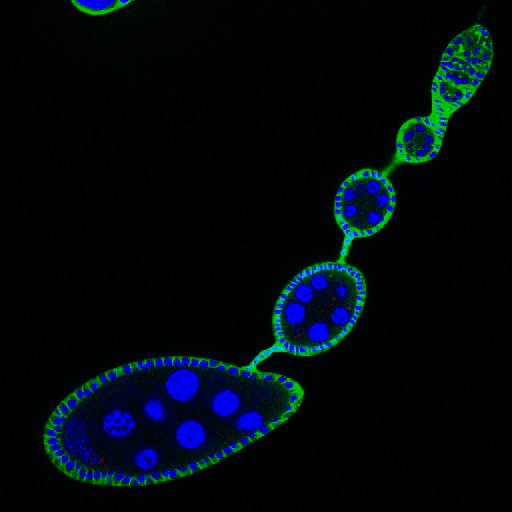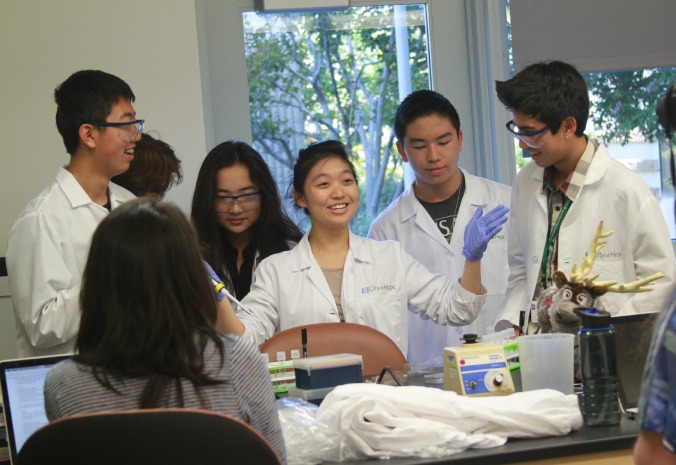Well, just like that, summer vacation is over. Most kids in California are back in school now and probably one of the first questions they’ll ask their friends is, “what did you do this summer?”. For 58 talented high school students, their answer will be, “I became a stem cell scientist.”
Best Instagram Post Award: Mia Grossman
https://www.instagram.com/p/BleQFSFASgQ/?tagged=cirmsparklab
Those students participated in a CIRM-funded internship called the Summer Program to Accelerate Regenerative medicine Knowledge, or SPARK for short, with seven programs throughout Northern and Southern California which include Caltech, Cedars-Sinai, City of Hope, Stanford, UC Davis, UCSF and the UCSF Benioff Children’s Hospital Oakland. Over the course of about 8 eight weeks, the interns gained hands-on training in stem cell research at some of the leading research institutes in California. Last week, they all met for the annual SPARK conference, this year at the UC Davis Betty Irene Moore School of Nursing, to present their research results and to hear from expert scientists and patient advocates.
As part of their curriculum, the students were asked to write a blog and to post Instagram photos (follow #cirmsparklab) to document their internship experiences. Several CIRM team member selected their favorite entries and presented awards to the winning interns at the end of the conference. We featured two of the winners in a blog from last week.
Our two winners featured today are Cedars-Sinai SPARK student, Mia Grossman – a senior at Beverly Hills High School – one of the Instagram Award winners (see her looping video above) and UC Davis SPARK student Anna Guzman – a junior at Sheldon High School – one of the Blog Award winners. Here’s her blog:
The Lab: A Place I Never Thought I’d Be
By Anna GuzmanAnna Guzman
My CIRM SPARK journey started long before I ever stepped foot in the Institute for Regenerative Cures at UC Davis. Instead, my journey started two years earlier, when my older sister came home from the same internship with stories of passaged cells, images of completed western blots, and a spark in her eye when she described the place she had come to love. Barely 14 years old, I listened wide-eyed as my sister told us about the place she disappeared to each morning, stories of quirky professors, lovable mentors, and above all, the brilliant flame that everyone in her lab shared for learning. But even as she told her stories around the dinner table, I imagined this cold place where my charismatic, intelligent, and inquisitive sister was welcomed. I imagined the chilling concentration of dozens of geniuses bent over their work, of tissue culture rooms where every tiny movement was a potential disaster, and above all, of a labyrinth of brilliant discoveries and official sounding words with the door securely locked to 16 year old girls – girls who had no idea what they wanted to do with their life, who couldn’t confidently rattle words like “CRISPR,” “mesenchymal” and “hematopoietic” off their tongues. In short, this wasn’t a place for me.
But somehow I found myself applying for the CIRM SPARK internship. Seconds after I arrived for my first day at the place I was sure I would not belong, I realized how incorrect my initial assumption of the lab was. Instead of the intimidating and sophisticated environment filled with eye-rolling PhDs who scoffed at the naïve questions of a teenager, I found a room filled with some of the kindest, funniest, warmest people I had ever met. I soon found that the lab was a place of laughter and jokes across bays, a place of smiles in the hallways and mentors who tirelessly explained theory after theory until the intoxicating satisfaction of a lightbulb sparked on inside my head. The lab was a place where my wonderful mentor Julie Beegle patiently guided me through tissue culture, gently reminding me again and again how to avoid contamination and never sighing when I bubbled up the hemocytometer, miscalculated transduction rates, or asked question after question after question. Despite being full of incredibly brilliant scholars with prestigious degrees and publications, the lab was a place where I was never made to feel small or uneducated, never made to feel like there was something I couldn’t understand. So for me, the lab became a place where I could unashamedly fuel my need to understand everything, to ask hundreds of questions until the light bulbs sputtered on and a spark, the same spark that had glowed in the eyes of my sister years ago, burned brightly. The lab became a place where it was always okay to ask why.
At moments towards the middle of the internship, when my nerves had dissolved into a foundation of tentative confidence, and I had started to understand the words that tumbled out of my mouth, I’d be working in the biosafety cabinet or reading a protocol to my mentor and think, Wow. That’s Me. That’s me counting colonies and loading gels without the tell-tale nervous quiver of a beginner’s hand. That’s me explaining my project to another intern without an ambiguous question mark marring the end of the sentence. That’s me, pipetting and centrifuging and talking and understanding – doing all the things that I was certain that I would never be able to do. That’s the best thing that the CIRM SPARK internship has taught me. Being an intern in this wonderful place with these amazing people has taught me to be assured in my knowledge, unashamed in my pursuit of the answer, and confident in my belief that maybe I belong here. These feelings will stay with me as I navigate the next two years of high school and the beginning of the rest of my life. I have no doubt that I will feel unsure again, that I will question whether I belong and wonder if I am enough. But then I will remember how I felt here, confident, and unashamed, and assured in the place where I never thought I’d be.
It was not until the end of my internship, as I stood up to present a journal article to a collection of the very people who had once terrified me, that I realized the biggest thing I was wrong about two years ago. I was wrong when I assumed that this was a place where I would never belong. Instead, as I stood in front of this community of amazingly brilliant and kind people, my mouth forming words that I couldn’t have dreamed of understanding a month ago, I realized that this was precisely where I belonged. This was the place for me.













![Emma Cruisenberry, an intern in the Rothman Lab at UCSB, snapped these two photos C. elegans—the top under normal conditions, versus C. elegans expressing the GFP marker under UV light in the intestinal cells. [Credit: Emma Cruisenberry]](https://blog.cirm.ca.gov/wp-content/uploads/2014/07/cruisenberry-image-2.jpeg?w=676&h=676)